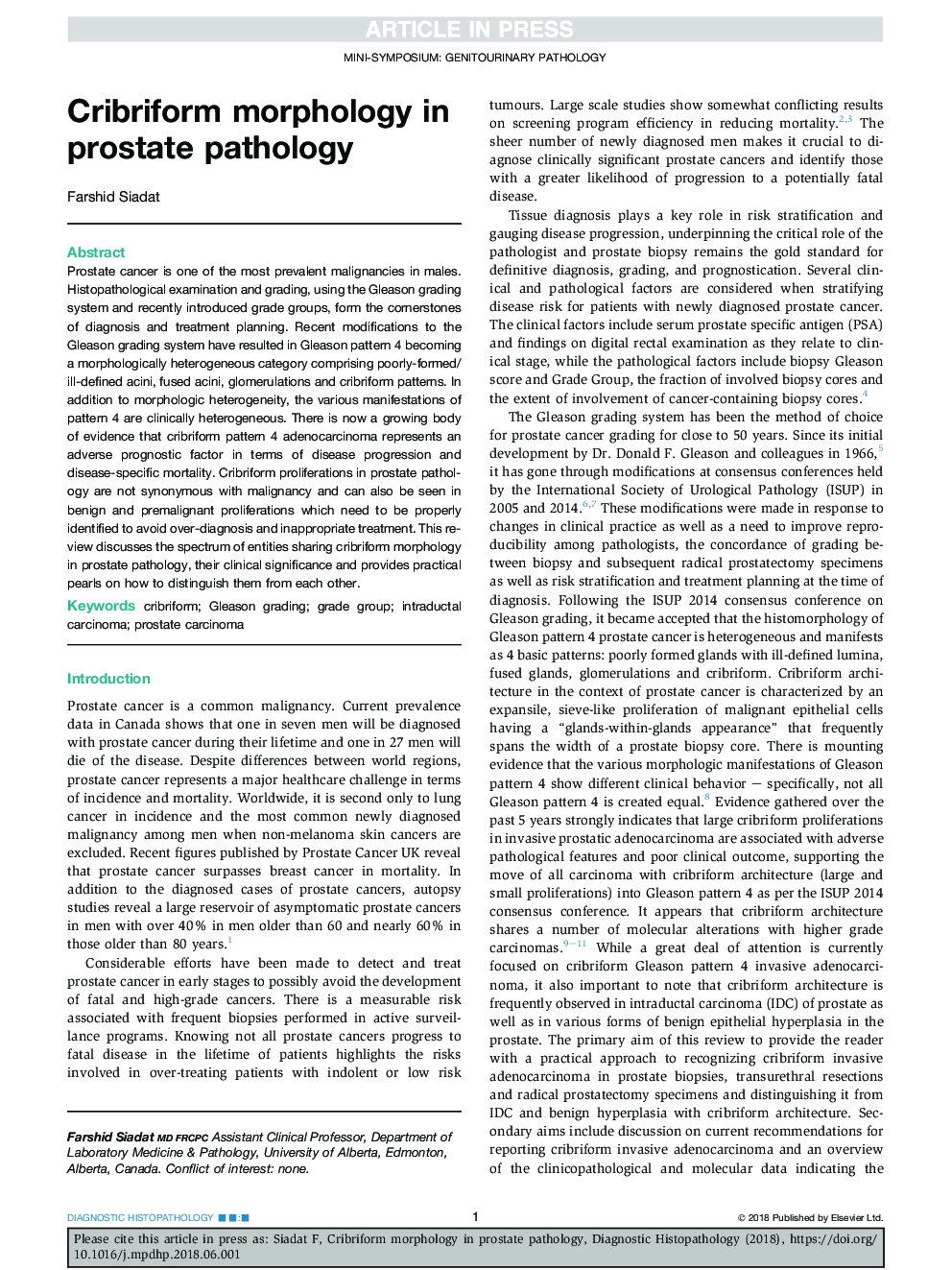| Article ID | Journal | Published Year | Pages | File Type |
|---|---|---|---|---|
| 8807298 | Diagnostic Histopathology | 2018 | 5 Pages |
Abstract
Prostate cancer is one of the most prevalent malignancies in males. Histopathological examination and grading, using the Gleason grading system and recently introduced grade groups, form the cornerstones of diagnosis and treatment planning. Recent modifications to the Gleason grading system have resulted in Gleason pattern 4 becoming a morphologically heterogeneous category comprising poorly-formed/ill-defined acini, fused acini, glomerulations and cribriform patterns. In addition to morphologic heterogeneity, the various manifestations of pattern 4 are clinically heterogeneous. There is now a growing body of evidence that cribriform pattern 4 adenocarcinoma represents an adverse prognostic factor in terms of disease progression and disease-specific mortality. Cribriform proliferations in prostate pathology are not synonymous with malignancy and can also be seen in benign and premalignant proliferations which need to be properly identified to avoid over-diagnosis and inappropriate treatment. This review discusses the spectrum of entities sharing cribriform morphology in prostate pathology, their clinical significance and provides practical pearls on how to distinguish them from each other.
Related Topics
Health Sciences
Medicine and Dentistry
Pathology and Medical Technology
Authors
Farshid Siadat,
